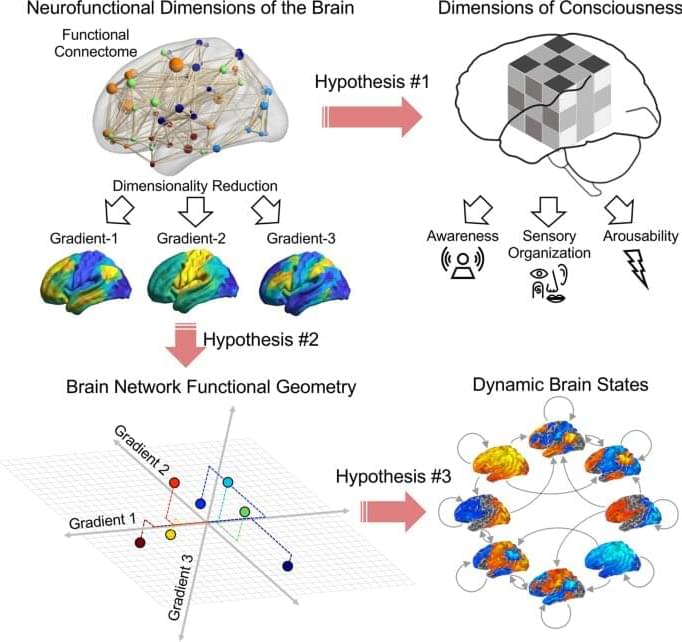In mathematical physics, a closed timelike curve (CTC) is a world line in a Lorentzian manifold, of a material particle in spacetime, that is “closed”, returning to its starting point. This possibility was first discovered by Willem Jacob van Stockum in 1937[1] and later confirmed by Kurt Gödel in 1949,[2] who discovered a solution to the equations of general relativity (GR) allowing CTCs known as the Gödel metric; and since then other GR solutions containing CTCs have been found, such as the Tipler cylinder and traversable wormholes.
Get the latest international news and world events from around the world.

How to Think About Relativity
We’re going to be a little different. Our route into special relativity might be thought of as top-down, taking the idea of a unified space-time seriously from the get-go and seeing what that implies. We’ll have to stretch our brains a bit, but the result will be a much deeper understanding of the relativistic perspective on our universe.
The development of relativity is usually attributed to Albert Einstein, but he provided the capstone for a theoretical edifice that had been under construction since James Clerk Maxwell unified electricity and magnetism into a single theory of electromagnetism in the 1860s. Maxwell’s theory explained what light is — an oscillating wave in electromagnetic fields — and seemed to attach a special significance to the speed at which light travels. The idea of a field existing all by itself wasn’t completely intuitive to scientists at the time, and it was natural to wonder what was actually “waving” in a light wave.
What’s next for quantum computing
This story is a part of MIT Technology Review’s What’s Next series, where we look across industries, trends, and technologies to give you a first look at the future
In 2023, progress in quantum computing will be defined less by big hardware announcements than by researchers consolidating years of hard work, getting chips to talk to one another, and shifting away from trying to make do with noise as the field gets ever more international in scope.
Ask Ethan: Is the Universe’s expansion accelerating or not?
Yes, dark energy is real. Yes, distant galaxies recede faster and faster as time goes on. But nthe expansion rate isn’t accelerating at all.

Geometry of brain, dimensions of mind: Researchers identify new ways to characterize states of consciousness
What it means to be conscious is more than just a philosophical question. Researchers continue to investigate how conscious experience arises from the electrochemical activity of the human brain. The answer has important implications for the way brain health is understood—from coma, wherein a person is alive but unable to move or respond to his or her environment, to surgical anesthesia, to the altered thought processes of schizophrenia.
Recent research suggests that there’s no one location in the brain that causes consciousness, pointing to a network phenomenon. However, tracing the various linkages between regions in the brain networks that give rise to awareness and wakefulness has been elusive.
A new approach using functional MRI, an imaging technique that allows you to see and measure brain activity through changes in blood flow over time, provides new insight into how we describe and study conscious states.

The Brain’s Ability to Perceive Space Expands Like the Universe
Summary: Time spent in a novel environment causes neural representations to grow in a surprising way.
Source: Salk Institute.
Young children sometimes believe that the moon is following them, or that they can reach out and touch it. It appears to be much closer than is proportional to its true distance. As we move about our daily lives, we tend to think that we navigate space in a linear way.
The top five telomere myths
Let me assure you that my intent in this article is not to refute any empirical data or established theories about telomeres. Instead, I will explain why I believe that the historical course of scientific discoveries and an outdated paradigm about the biological cause of aging have led to the use of inaccurate language in describing the roles and functions of telomeres.
Big tech doesn’t want AI to become conscious
Artificial intelligence can be impressive to the extent that people think it might one day acquire human intelligence and, with it, consciousness. But AI can be far more intelligent than humans without ever being conscious. And apart from us having no idea how to create conscious AI, it might not even be that desirable. We fool ourselves if we think conscious beings are the exemplar of intelligence in the universe, argues Susan Schneider in this interview with iai News.

The discovery of a mural dedicated to Egyptian goddesses, buried under thick layers of bird poop
Forty-six representations of ancient Egyptian goddesses were found in a mural completely covered in bird dung in an ancient temple.
During ancient times, the ancient Egyptians built Esna on the west bank of the River Nile: the city that served as a center of power in Upper Egypt. While they were in office, public buildings and temples were decorated with ornate murals dedicated to gods from the sacred pantheon. Over time, the ancient ceremonial centers became covered in sand, dust, and animal feces.
